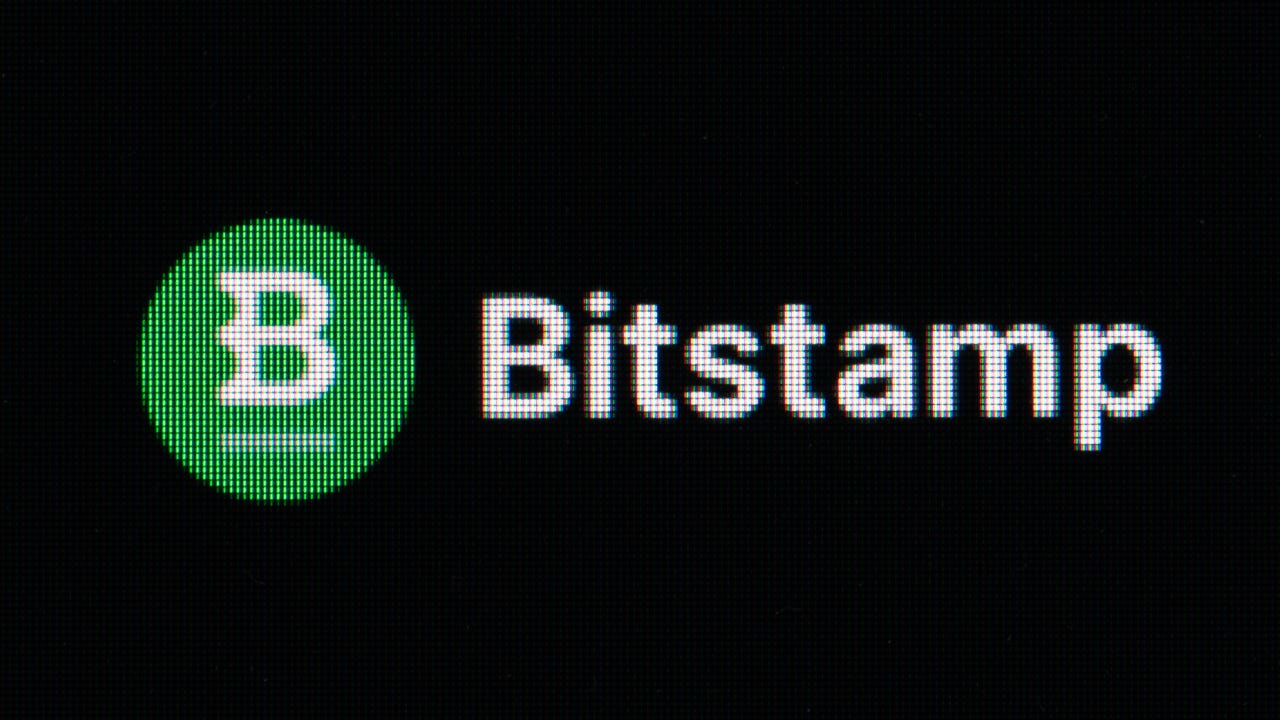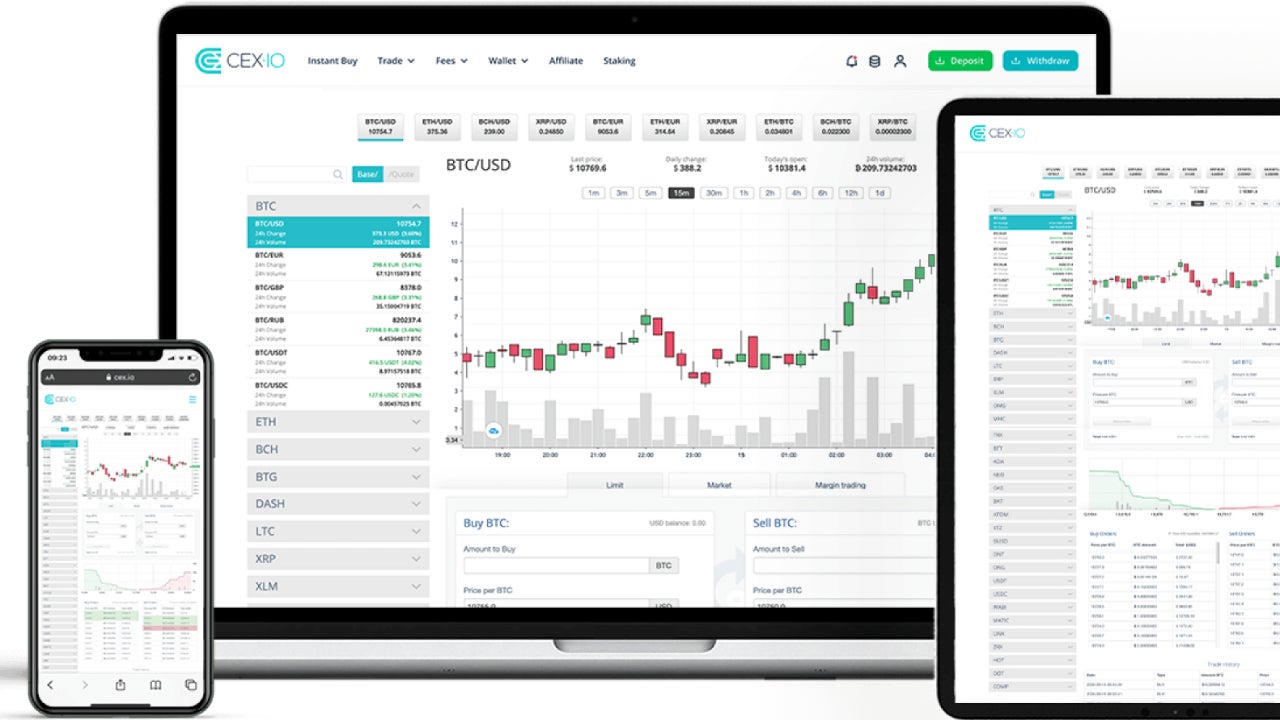Bitstamp review 2023

Bitstamp offers an attractive commission structure, recently revamped to favor ultra-low-volume traders, and it compares favorably against the competition. Customers will be able to trade more than 70 cryptocurrencies, though they’ll only be able to earn staking rewards on a pair of them after Bitstamp deducts a not-insubstantial piece of the pie for its efforts. In contrast to many low-service rivals, Bitstamp offers 24/7 phone support in addition to the usual self-help and support tickets elsewhere. All in, Bitstamp offers a competitive service at competitive rates.
Those looking for a wider selection of cryptocurrencies might also check out Crypto.com or Bittrex, while those looking for just the core cryptocurrencies alongside traditional trading may find that apps such as Webull or even brokerages such as tastyworks fit what they need.
| Category | Bitstamp |
|---|---|
| Minimum balance: | None; $10 minimum to trade |
| Securities tradable: | 77 cryptocurrencies, though U.S. traders won’t be able to access XRP |
| Cost per trade: |
|
| Customer service: | Self-help, support tickets, email and 24-hour phone support |
| Mobile app: | The Bitstamp mobile app is available on the Apple App Store and Google Play Store |
Pros: Where Bitstamp stands out
Commissions
The commission structure is both more favorable and less favorable to traders than that of other exchanges, depending on exactly how you fall into the exchange’s fee schedule. While Bitstamp previously offered a simpler volume-based pricing schedule, it now offers a maker-taker structure (more later), as does most of the rest of the crypto exchange industry. As elsewhere, the more you’ve traded in the prior 30 days, the lower your fees – nothing unusual there.
Here’s how Bitstamp lays out its commission structure:
| 30-day volume | Maker | Taker |
|---|---|---|
| $0-$1000 | 0 percent | 0 percent |
| $1,000 – $10,000 | 0.30 percent | 0.40 percent |
| $10,000 – $100,000 | 0.20 percent | 0.30 percent |
| $100,000 – $500,000 | 0.10 percent | 0.20 percent |
| $500,000 – $1.5 million | 0.08 percent | 0.18 percent |
| $1.5 million – $5 million | 0.06 percent | 0.16 percent |
| $5 million – $20 million | 0.03 percent | 0.12 percent |
| $20 million – $50 million | 0.02 percent | 0.10 percent |
| $50 million – $100 million | 0.01 percent | 0.08 percent |
| $100 million – $250 million | 0 percent | 0.06 percent |
| $250 million – $1 billion | 0 percent | 0.05 percent |
| $1 billion or more | 0 percent | 0.03 percent |
Bitstamp parses its fee schedule into a whopping 12 tiers – somehow down from the 17 tiers before – and still among the highest number we’ve seen. Unlike before, Bitstamp now charges based on whether you’re adding liquidity to the market (as a maker) or removing it (as a taker). Bitstamp’s fee structure is more advantageous than some others at low volumes in particular.
For example, compare Bitstamp to Coinbase Advanced Trade:
- At Bitstamp, a 30-day trading volume of $10,000 would entitle you to fees of either 0.20 percent (as a maker) or 0.30 percent (as a taker) for the next $90,000 in trades. If you did $40,000 in volume, you’d pay between $80 and $120 in fees.
- With Coinbase Advanced Trade, you’ll pay 0.25 percent (maker) or 0.40 percent (taker) for volume between $10,000 and $50,000. If you did $40,000 in incremental volume, you’d pay between $100 and $160 in fees.
And you should notice that Bitstamp lets you trade the first $1,000 in 30-day volume at no fee, especially beneficial for low-volume traders.
Of course, you’ll also want to compare Bitstamp to other options, such as Binance.US, which allows you to trade Bitcoin and Ethereum without a commission. The rest of the fee schedule depends on a variety of factors, though Binance does offer among the best fees.
So you’ll want to carefully review your expected trading volume and which exchange serves you best.
It’s also worth noting that prices for foreign exchange and stablecoin pairs cost just 20 percent of the figures noted in the table above (more below).
Staking rewards
Not all crypto exchanges offer the ability to earn staking rewards on your holdings, but Bitstamp does. Staking rewards are a payment to owners for helping to support the cryptocurrency. Staking is the process of putting up your currency to help verify transactions in a given cryptocurrency. In return, you’ll get a payment for committing your holdings and the risk of doing so.
Bitstamp helps coordinate staking for you and then passes on the net staking reward, minus its 15 percent fee. The exchange clearly lays out the fee structure for you, unlike some rivals that paper over their costs by saying that you’ll pay a “small fee” that remains undisclosed.
Staking rewards at Bitstamp are only available for Ethereum and Algorand at this time. And they’re available for U.S. customers except those in New York, Nevada, Hawaii and Louisiana.
Available cryptocurrencies
Bitstamp has a solid collection of tradable cryptocurrencies as well, making it an attractive place if you’re looking to trade more than just the top handful of cryptos at more traditional shops such as Interactive Brokers or even Robinhood. Of course, you’ll get Bitcoin and Ethereum, the two largest cryptocurrencies, but you’ll also get dozens of smaller others – a total of 77, though U.S. traders won’t be able to trade XRP here.
The cryptocurrencies available here are sizable, but Bitstamp falls behind the 200+ coins offered at Coinbase or the 250+ available at Crypto.com and even the 100+ at Bittrex. Still, Bitstamp provides a solid selection, and it’s growing.
Customer support
Bitstamp stands out for its customer support in a crowded field of crypto exchanges where the level of support usually runs from marginal to meager. At Bitstamp, you’ll get what’s the standard for crypto exchanges: a self-help section on the website as well as a support ticket system and email. But you’ll also get phone support 24 hours a day, a relative rarity among crypto exchanges.
That phone access can be a significant advantage when you have to explain a complex issue and may not even fully understand what’s going on yourself.
Cons: Where Bitstamp could improve
Not all trades count equally toward 30-day volume
The exceptions and carve-outs in the pricing and volume rules make it absolutely essential that you read the fine print on commissions both here and at other crypto exchanges.
As noted above, foreign exchange and stablecoin trades cost just 20 percent of the value of other cryptocurrency trades at each pricing tier. However, they also count at the same 20 percent rate when it comes to establishing your 30-day volume, too. So don’t expect those relatively cheap stablecoin trades to subsidize your later high-volume crypto trades.
Deposit and withdrawal fees
Bitstamp hits you for fees, some of which are a bit higher or somewhat unusual.
First, it’s worth noting that ACH transfers, such as to or from your bank, are free. Surprisingly, some crypto exchanges – such as Crypto.com – actually charge for some basic transfers.
But if you’re looking to pay with a debit card, you’ll be hit for a 4 percent fee at Bitstamp, in addition to whatever your card company might charge. It’s among the highest fees we’ve seen.
And international wire deposits will cost you a fee of 0.05 percent of the transfer value, with a minimum of $7.50 and a maximum of $300. Outgoing international wire transfers will get clipped for 0.1 percent, with a minimum of $25 and no stated maximum.
Finally, deposits of cryptocurrency are generally free of charge, but withdrawals will set you back. Bitstamp discloses those fees clearly, and you’ll pay them in each crypto coin you transfer. For example, the fee to transfer Bitcoin is 0.0005 bitcoins, or less than $9 at current pricing.
You may also like





